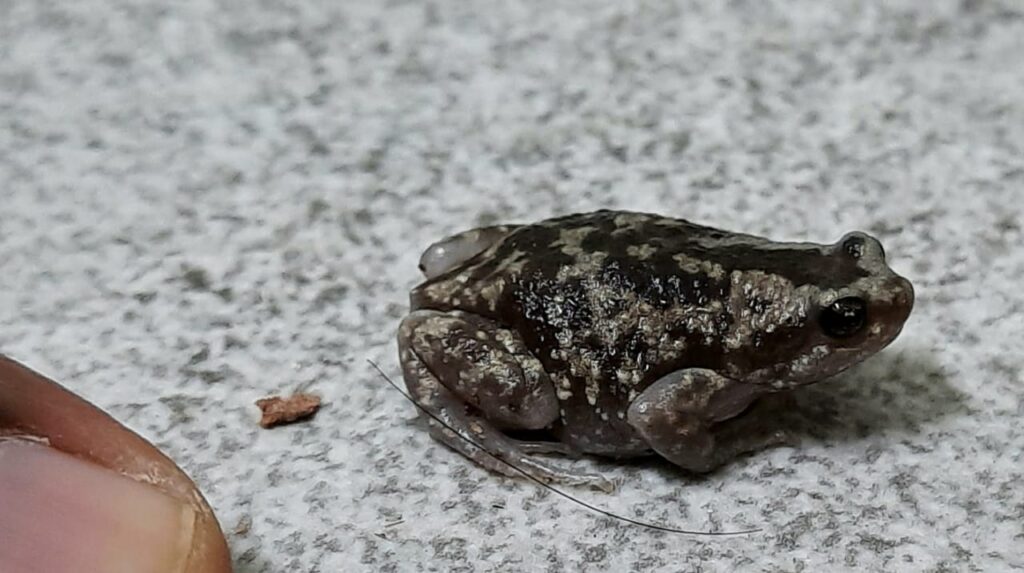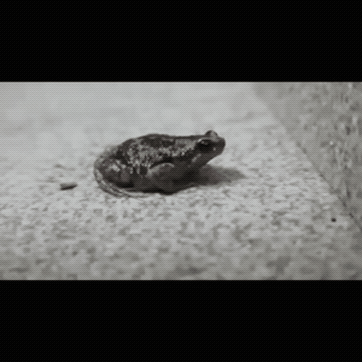Connecting kids with nature
tiny frog
Yesterday night, saw this frog who’d somehow made it indoors… the size of a thumbnail… seemed to be well adapted to the flooring tiles 🙂

Looking at the movement of the throat… I’d assumed it was the frog’s pulse. Or maybe it was practicing croaking and waiting for me to go away to increase the volume!

But this morning I doubted my blind assumption and looked it up…
While completely submerged all of the frog’s respiration takes place through the skin.
When the frog is out of the water, mucus glands in the skin keep the frog moist, which helps absorb dissolved oxygen from the air.
A frog may also breathe much like a human, by taking air in through their nostrils and down into their lungs. The mechanism of taking air into the lungs is however slightly different than in humans. Frogs do not have ribs nor a diaphragm.
In order to draw air into its mouth the frog lowers the floor of its mouth, which causes the throat to expand. Then the nostrils open allowing air to enter the enlarged mouth. The nostrils then close and the air in the mouth is forced into the lungs by contraction of the floor of the mouth.
To eliminate the carbon dioxide in the lungs the floor of the mouth moves down, drawing the air out of the lungs and into the mouth. Finally the nostrils are opened and the floor of the mouth moved up pushing the air out of the nostrils.
Frogs also have a respiratory surface on the lining of their mouth on which gas exchange takes place readily. While at rest, this process is their predominate form of breathing, only fills the lungs occasionally. This is because the lungs, which only adults have, are poorly developed.
ref: https://www.brown.edu/Departments/Engineering/Courses/En123/MuscleExp/Frog%20Respiration.htm
So it looks like or every breath into the lungs the frog has to actually do this expansion twice, alternating between closed and open nostrils.
Though I wouldn’t have minded the ability to breathe underwater 😉 …taking a moment to acknowledge with gratitude our own evolved breathing… with the synchronous movement of our stomach, diaphragm and lungs.
Recent Comments